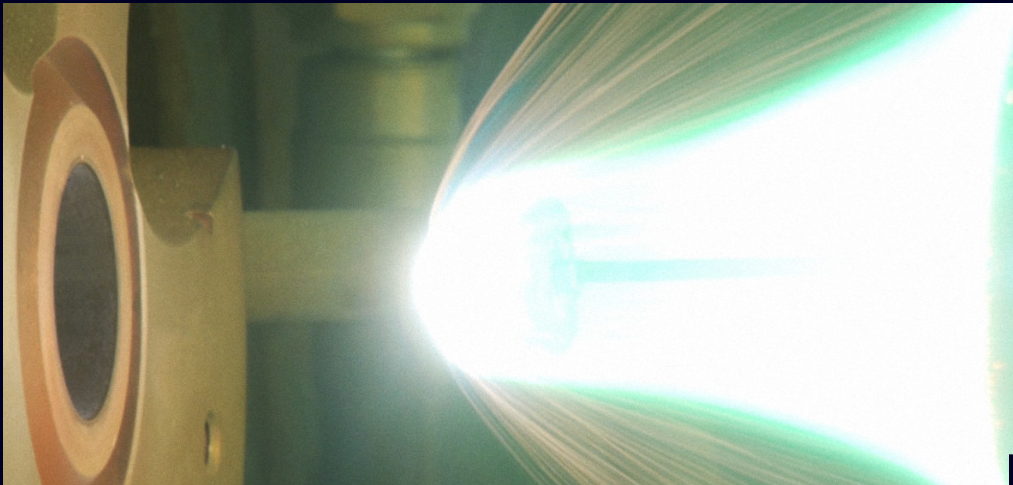
If everything works out, the night sky over Hiroshima, Japan, will fill with the graceful arcs of blue, green, and orange shooting stars sometime in the summer of 2019.
The fireworks will come courtesy of a satellite some 220 miles high, owned by the world’s first “aerospace entertainment” firm, Astro Live Experiences, or ALE.
The brainchild of University of Tokyo astronomer Lena Okajima, the spacecraft will circle the globe and kick out 15 to 20 small metallic pebbles on command. Those seeds, less than half an inch wide, will blaze overhead for a few bright seconds over the city of the buyer’s choice.
“We want to provide meteor showers on demand.”
“We want to provide meteor showers on demand,” Josh Rodenbaugh, a member of ALE’s satellite operations team, told BuzzFeed News.
Their customers could be cities, companies, amusement parks, the mega-rich — anyone who can pay for such a spectacular show. Rodenbaugh declined to cite a specific cost, except to say that it would be less than the massive fireworks displays that major cities use to celebrate holidays. (Tokyo's fireworks displays run around $40,000 a firework, according to Rodenbaugh. “We feel we can be under that number.” New York’s 4th of July festivities run around $6 million.)
Originally conceived as an opening act for the 2020 Tokyo Olympics, the “Sky Canvas” project has blossomed into a glamorous harbinger of the new entrepreneurial era in space. But some satellite experts question the logic of launching a sandblaster into orbit, given the risk that its projectiles might collide with any of the thousands of satellites that space firms such as SpaceX will be adding to the same orbit.
“I salute them for cleverness and for their technical expertise, but from an orbital debris standpoint, it’s not a great idea,” University of Michigan astronomer Patrick Seitzer told BuzzFeed News. “I’m concerned space will be getting crowded in low-earth orbit in the next 10 years.”
Although astronomers originally had some concerns about light pollution from the shooting stars interfering with observatories, Seitzer added, those concerns don’t seem legitimate given the short lives and intended locations of the artificial shooting stars.

ALE is building two small microsatellites, the first scheduled for launch from Japan in December. Each 150-pound, $3 million spacecraft will carry 300 to 400 shooting star particles and have enough propellant to last 27 months in orbit before burning up in the atmosphere.
Ultimately, the company hopes to have three sets of larger six-satellite constellations which would allow it to deliver shooting stars anywhere on Earth at 8 p.m., 8:30 p.m., and 9 p.m. at night, on any evening — dark enough for the meteors to be seen, but not so late that children have fallen asleep.
Streaking across the sky, the pellets are made of heat shield material similar to that of the bottom of space capsules, which char rather than burn under high heat. (Real shooting stars are typically the size of grains of sand, comet dust traveling faster than satellites that streak across the atmosphere.)
Scientifically, the artificial meteors will burn up within four to five seconds before they fall to an altitude 37 miles above Earth, allowing them to probe a part of the atmosphere too high for experimental balloons and too low for satellites.
ALE purposely lowered its satellite’s orbit below the 250-mile altitude of the International Space Station to avoid any collision risks. Only about 40 satellites travel below 220 miles high, Rodenbaugh said, and the firm plans to check three times before any shooting star launch with the US Strategic Command’s satellite trajectory catalog. Any chance a artificial meteor will come within 124 miles of a satellite will call off the event.
“We ran a simulation of releasing particles every hour for a year against the catalog and didn’t find any times we came close,” Rodenbaugh said.
That’s great for now. But in the next decade, Elon Musk’s SpaceX plans to put 7,500 new broadband internet satellites in orbits about 210 miles high, just below ALE’s satellites. Other firms are planning similar satellite fleets, Seitzer noted.
What’s more, some national security satellites are purposely not listed in the satellite catalog that ALE will rely on, noted retired Air Force Lt. Col. Charles Phillips. He pointed to published reports of National Reconnaissance Office spy satellites that dip as low as 158 miles altitude on their trajectories.
“If the Sky Canvas satellite accidentally hit a [spy satellite] there might be some angry people,” Phillips told BuzzFeed News by email. “Of course everyone wants to encourage innovation and commercial use of space, but this use requires extraordinary steps to keep other spacecraft from being impacted — literally.”
ALE’s first launch has been approved by the Japan Aerospace Exploration Agency, Rodenbaugh told BuzzFeed News. The firm has also consulted with NASA, the European Space Agency, and the US Defense Department, he said, and informally with the Chinese and Russian space agencies.
“We are more than happy to approach anyone and talk over any concerns they might have about anything they have in orbit,” Rodenbaugh said. “We want to make this work for everyone.”

